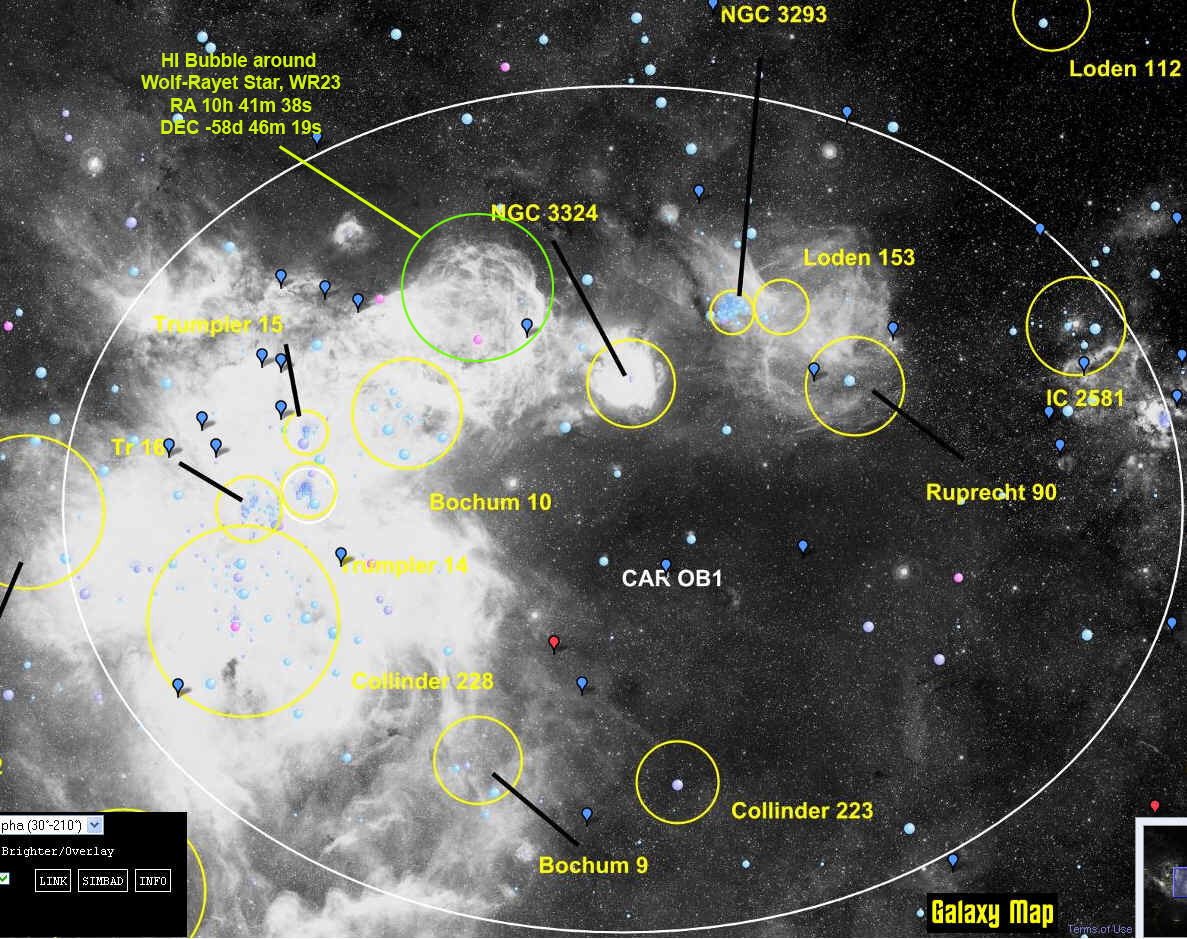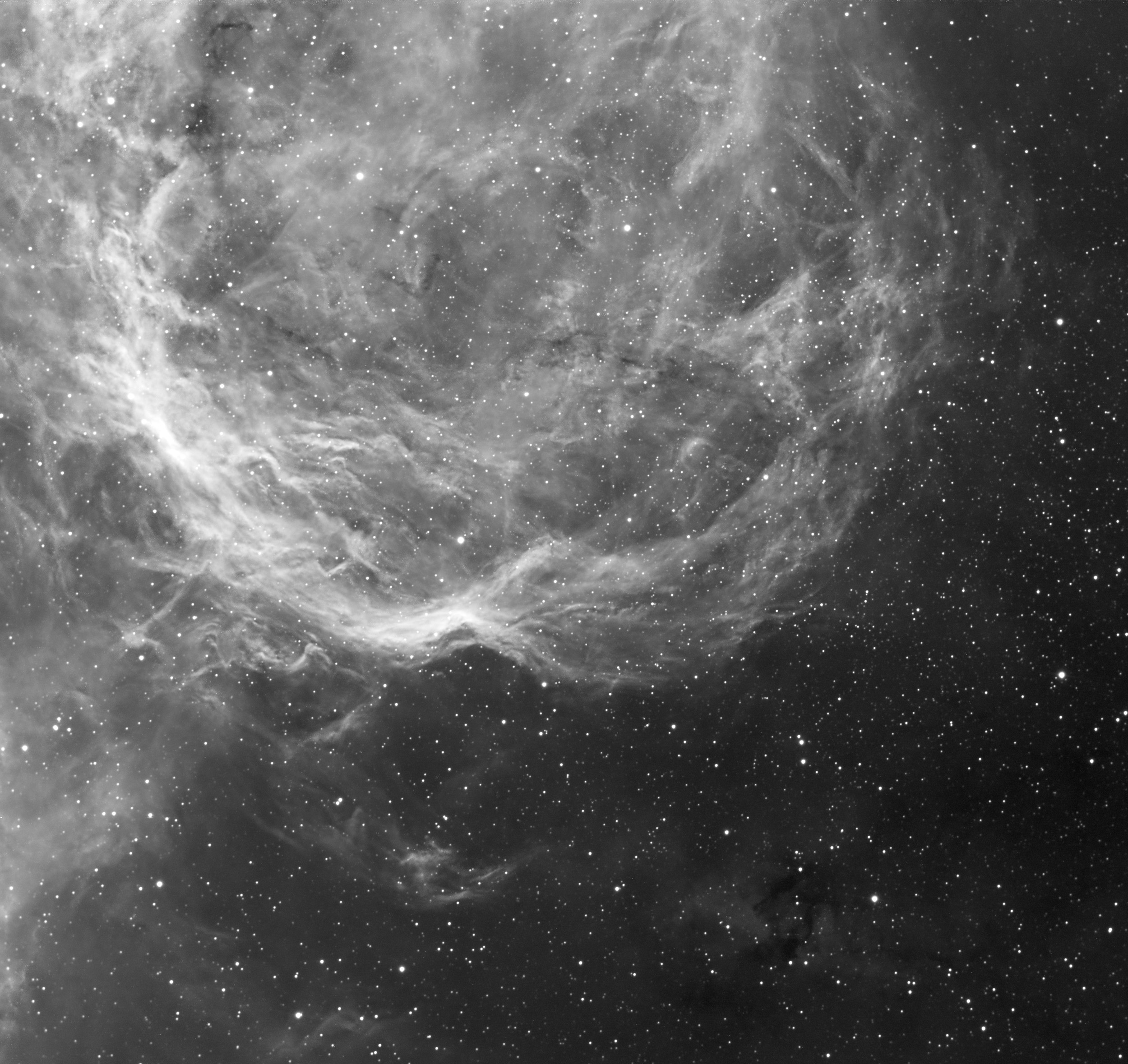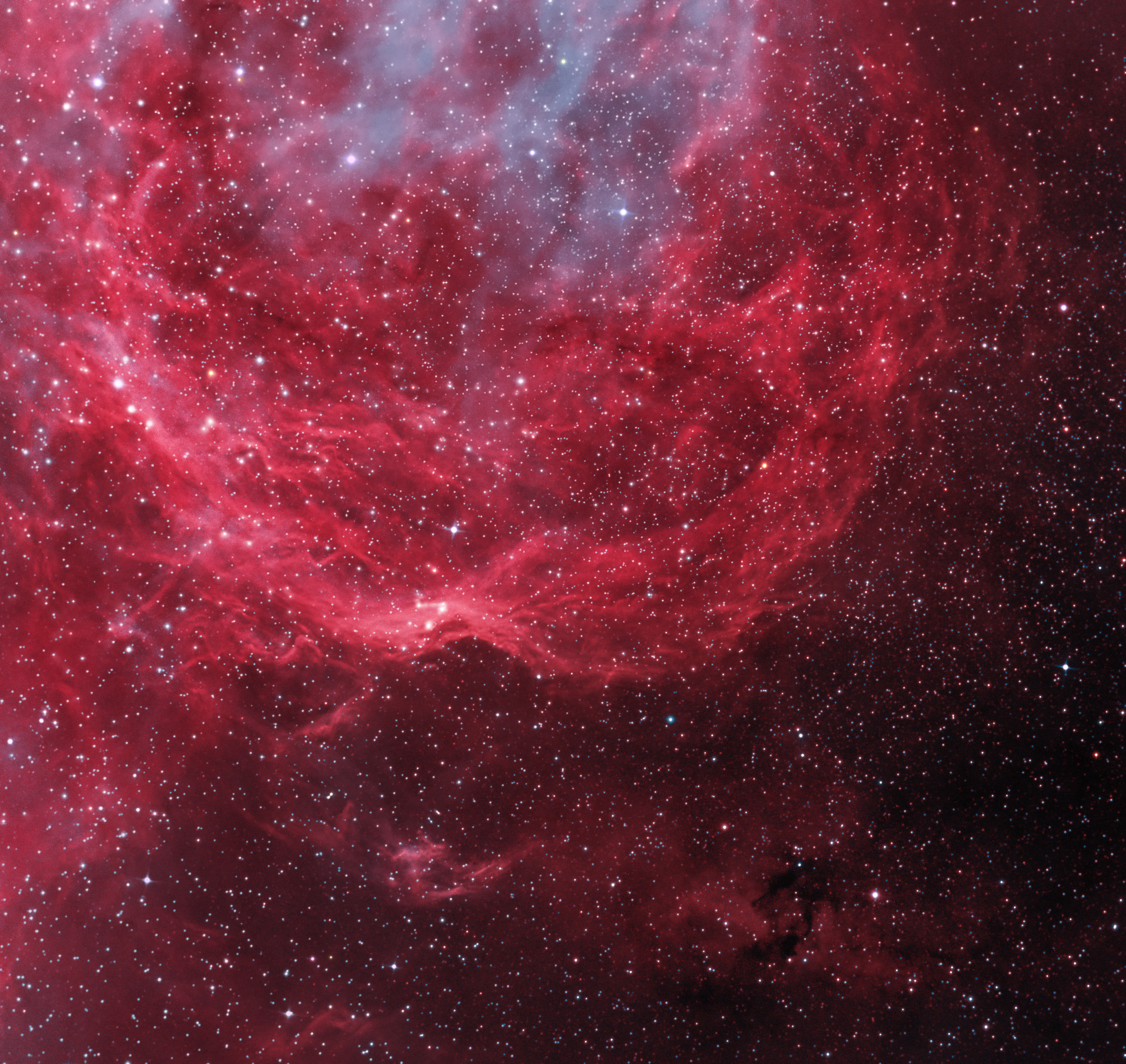
WR23 (HD92809) is located at RA 10hr 41m 38s and DEC -58d 46m 19s. It is the middle of the three bright stars near the top of the narrowband image just to the left of center in a pocket of blue-mapped OIII nebulosity. . The Hubble mapped color palette was used where Blue = OIII, Green = H-a and Red = SII. The framing was chosen to create the appearance of looking through a hole into the Carina nebula toward Eta Carina.
Wolf-Rayet stars are hot (25,000 – 50,000K) , massive (>20 solar masses) stars. They are undergoing a normal evolution for very massive stars where they lose orders of magnitude more solar mass each year in comparison to our Sun. They do so in the form of a very strong solar wind that interacts with the interstellar medium, often producing "bubbles", as shown here. Thor’s Helmet (NGC 2359) is a northern example of such a WR "bubble". C. Cappa, et al.(Astron. & Astrophys, v426, Issue 1, June 2, 2005, p 155) estimate the age to be 700,000 years and a size of thebubble to be about 42 light years in radius, expanding at 10 km/s. The H-a data used to make the color composite is presented below.

For those who prefer natural colors, the colors were remapped so that Red/Magenta = SII and H-a and Green ~ Blue = OIII.


